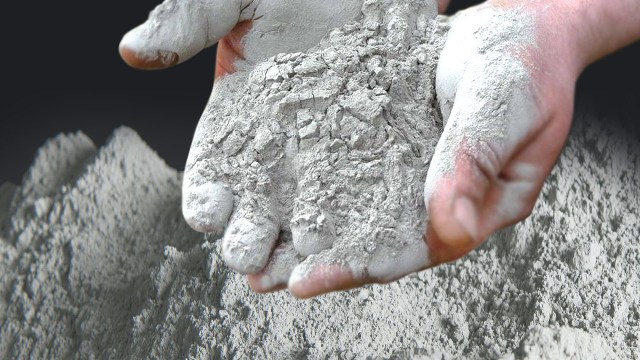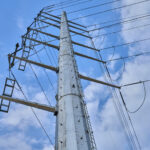Cement Sector: Recovery on Card
The current scenario – economy revival on card, government on war footing to vaccinate its citizens, infrastructure and realty projects back on track, a near ‘Normal’ monsoon, pick-up in rural demand – all these bore well for the recovery of cement sector
Consumption of cement is an important indicator to judge the economic health of the nation. More the consumption of cement, better the economic health of the country. Like all other sectors, the cement sector too was badly hit by the Pandemic, but with partial lifting of lockdown the cement sector has limped backed. “The Cement sector has witnessed a strong recovery starting from 2QFY21 after being hit hard by the pandemic induced disruption in 1QFY21 (volumes down 30% yoy). Volume growth returned in 2QFY21 itself with 5% growth yoy after which the pace of growth picked up in 2HFY21, restricting decline in demand 2-3% yoy for FY21. The listed universe, that accounts for 75%-80% of the total industry volumes, reported 44% yoy growth in sale volumes in 1QFY22. While the optically high yoy growth is on account of the exceptionally low base of 1QFY21 marred by stringent lockdowns, volumes during 1QFY22 were 1% yoy higher than in 1QFY20 (the last normal 1Q), despite the second wave affecting economic activity in 1QFY22. Demand in the Southern region was hurt by relatively stringent lockdowns certain states coupled with heavy rains. Sector capacity utilisation stood at 71% in 1QFY22, 400bp lower than in 1QFY20 mainly due to the impact of the second wave. The central region saw a significant pick-up in affordable housing as Uttar Pradesh completed 0.6 million units in 1HFY22 (FY21: 0.04 million units), given the upcoming state assembly elections,” says Khushbu Lakhotia, Associate Director, India Ratings and Research.
Now, with Covid-19 positive cases decreasing considerably the economic activities are slowing returning back on track. The government is on a war footing to vaccinate all its citizens. The governments’ earnest efforts are bearing fruits. Double vaccinated citizens are back to work so are the labourers and semi skilled workers. On back of infrastructure projects, especially roads and highways, the cement sector is on a revival mode. “From Q2-FY22 onwards, the demand has witnessed traction as restrictions were lifted in a phased manner across states leading to a gradual pick-up in demand from construction and infrastructure. On a year-on-year basis, the cement production almost doubled in the first two months of FY22 (April and May 2021) compared to a around 50% decline for the same period in FY21. The doubling in FY22 was on account of the statistical low base effect as the country was under a nationwide lockdown during April and May 2020. Further for the first five months of FY 22 (April to August 2021), the overall production is estimated to have reached the pre-pandemic levels, growing 44% year on year after a 29% decline in the corresponding period last year. This growth is attributable to significantly elevated levels of government spending towards affordable housing and public infrastructure and pick-up in demand from rural and urban markets with resumption of economic activities through-out the country,” says Tushar Shah, Director, CARE Advisory Research and Training.
Expansion and investment
The monsoon is about to end. This year the monsoon has been normal and a normal monsoon is a good omen for the cement sector. In anticipation of huge demand from realty and infrastructure sector, the cement players have started expansion or commissioning of new manufacturing plants. UltraTech Cement has announced an investment of Rs. 5,477 crore towards increasing its capacity by 12.8 million tonne per annum with a mix of brownfield and greenfield expansion. This additional capacity will be created in the east, central and north regions markets of the country. This expansion includes the existing approval for the cement plant at Pali in Rajasthan, in addition to company’s 6.7 MTPA capacity expansion currently underway in Uttar Pradesh, Odisha, Bihar and West Bengal.Ambuja Cement has plans to add 20 million tonne per annum (MTPA) to its existing 30 MTPA capacity. Towards achieving this target, the company has recently started commercial production of clinker and cement at its Marwar Greenfield Plant (Marwar Cement Works) in Nagaur district of Rajasthan.ThisGreenfield integrated plant is build with an investment of Rs. 2,350 crore deploying all modern equipment and technology to produce environment friendly cement.The company has also plans to invest Rs 310 crore to expand the production capacity of its plant at Ropar, Punjab. The expansion at the Ropar plant is expected to be completed by June 2023, Once completed the total capacity of the cement grinding unit at Ropar will increase to 4.5 MTPA from 3 MTPA now.
JK Cement has set an ambitious target of increasing it production capacityto about 23 million tonnes per annum from 15 million tonnes, in the next two years. To increase the capacity, the company plans to invest Rs 2,970 crore. The companyis setting up a new manufacturing plant at Hamirpur in Uttar Pradesh.The Hamirpur plant will have an approximate capacity of 2 MTPA.In addition to establishing an integrated greenfield grey cement plant of four milliontonnes per annum by its wholly-owned subsidiary Jaykaycem (Central) at Panna, Madhya Pradesh. Ramco Cements has plans to increase its capacity by 20 MTPA by the first quarter of FY2022. The company is expected to commission clinkering unit of 1.5 MTPA along with 9 MW waste heat recovery system (WHRS) in Jayanthipuram and 2.25 MTPA clinkering unit in Kurnool during Q1FY22 and 1-MTPA cement grinding facility, 12 MW of WHRS and 18MW of thermal power plant in Kurnool are expected to be commissioned by FY2022.
Recently, Dalmia Cement (Bharat), a subsidiary of Dalmia Bharat, has signed three memorandum of understandings (MoU) with the Government of Jharkhand to invest Rs758cr in the state.Dalmia Cement will invest Rs 500 crores in its manufacturing unit at Jharkhand Industrial Area Development Authority Bokaro. In addition to expanding its existing capacity of 3.7Mnt through debottlenecking, the company plans to set up a new grinding unit, taking the overall cement manufacturing capacity at Bokaro to 6.3 MTPA. The company has also announced a capacity addition of 2.3 million tonne at its Bengal Cement Works (BCW) unit in West Bengal at an investment of Rs. 360 crore. This addition will increase BCW unit’s overall capacity to 4 million tonne per annum, making it the largest cement plant in West Bengal.
To accelerateits capacity expansion from the current 14 MTPA to 25 MTPA, JSW Cement has strike a deal to raise Rs 1,500 crore from two global private equity investors – Apollo Global Management Inc and Synergy Metals Investments Holding.While Shiva Cement, a subsidiary of JSW Cement, will invest over Rs. 1,500 crore to set up a clinker unit at Sundergarh in Odisha. The plant will have an annual capacity of 1.36 million tonne. Apart from the clinker unit the company will also set up 1 MTPA grinding unit; 8 MW waste heat recovery power plant; 4 MTPA crushing plants at its dolomite and limestone mines along with a 10-km long overland belt conveyor to transport limestone from the mines to the manufacturing plant and an own railway siding with 12 km long railway track for seamless transportation of finished goods to the market. MP Birla Group firm Birla Corporation has set a target of almost double its cement manufacturing capacity to 30 million tons per annum in the next five years by 2027.Orient Cement plans to invest about Rs.2,000 crore on expanding its facility in Adilabad district in Telangana.Star Cement has recently commissioned a grinding unit in Bengal at an investment of Rs 450 crore, taking its overall capacity to a little over 6 million tonnes per annum (mtpa) with a clinker capacity of 2.8 million tonnes.India Cements has plans to establish a new plant in Madhya Pradesh, and capacity debottlenecking at its plants in the South.
Taking lead in going green
According to reports cement sector is the third largest industrial source of pollution, emitting more than 500,000 tons per year of sulfur dioxide, nitrogen oxide, and carbon monoxide. It is a well-known fact roughly about 950-960 kg of CO2 is emitted per tonne during manufacturing of 1 tonne Ordinary Portland Cement (OPC), while producing Portland Pozzolana Cement (PPC) CO2 emission comes to about 550- 600 kg per tonne of cement. India under the Paris Agreement has taken three quantitative climate change goals to reduce greenhouse gas emission. The three quantitative climate change goals include reduction in the emissions intensity of GDP by 33 to 35 per cent by 2030 from 2005 level, achieving about 40 per cent cumulative electric power installed capacity from non-fossil fuel-based energy resources by 2030 and creating an additional carbon sink of 2.5 to 3 billion tonnes of carbon dioxide equivalent through additional forest and tree cover by 2030.To tune with the National’s mission to reduce green house gas emission, cement players are now increasingly adopting green energy such as wind, solar and waste heat recovery systemfor generation of power. “Cement manufacturers have been shifting towards alternate energy for quite some time now. Key initatives taken on this front include: blending other materials such as corporation waste, waste tyre, waste plastic in kilns to reduce cost as well as gather carbon footprints. However, blending has been limited to around 5%; Installing wind and solar plants to reduce grid power intake as captive power from renewable comes at a lower cost and also helps them meet target for renewable energy usage; WHRS is also being installed by most players to reduce dependence on steam power plant (SPP) / grid power. Power generation cost through WHRS (adjusted for depreciation and maintenance cost) still comes at 25-30% of grid power cost and 40-50% of cost of generation through spp / renewable,” says Isha Chaudhary, Director, CRISIL Research.
To reduce emission of carbon dioxide, cement companies are on a war footing to install alternate sources of energy, waste heat recovery plant and carbon capture technologies. “As per ICRA analysis, the usage of renewable sources of energy such as solar energy, wind energy and waste heat recovery system (WHRS) have been gaining momentum, in particular the latter has emerged as one of the cheapest source of power generation given the negligible input costs. By generating power using the hot gases produced during the manufacturing process, WHRS is more cost efficient and helps in augmenting the operating profitability. The cost of installation of WHRS plant is around Rs. 8-10 crore per MW of capacity and with an optimal plant utilization, the pay-back period for WHRS usually is 3 years. The cost of power generation using WHRS technology is around Rs. 1.3-1.5/kwh (including depreciation and interest[1]) as compared to Rs. 4.5-5/kwh for captive thermal power. With 20%-25% WHRS replacement in total power capacity, the power cost savings for cement companies is estimated to be around 14%-18% resulting in an improvement in the operating margins by around 110-140 bps,” says Anupama Reddy, Assistant Vice President & Sector Head, ICRA.
Shree Cement will invest Rs. 500 crore to set up solar power plants at its cement units at various locations. The solar power plants having a capacity of up to 106 megawatts (MW) will meet the captive power requirement of the company's cement plants at various locations. This project would be completed within the quarter ending September 2022. Prism Cement has established a 12MW waste heat recovery (WHR) plant and 10MW solar power plant at its plant in Satna, Madhya Pradesh. Prism Cement has established a 12MW waste heat recovery (WHR) plant and 10MW solar power plant at its plant in Satna, Madhya Pradesh. Ambuja Cements and ACC are investing Rs. 780 crores to set up waste heat recovery system based power plants at their six cement plants across India. Ramco Cements has commissioned a 9MW waste heat recovery power plant at its 3.7Mt/yr Jayanthipuram, Andhra Pradesh cement plant and is in the process of installing two more 9 MW waste heat recovery power generating plants. UltraTech Cement has lined up investment worth Rs 1,500 crore in FY21 in multiple initiatives, which also includes setting up of 66 MW of waste heat recovery systems. Shiva Cements will be commissioning 8MW waste heat recovery unit and JK Lakshmi Cement will be commissioning its waste heat recovery unit III Project at Sirohi this year. Mangalam Cement has fully commissioned an 11MW waste heat recovery (WHR) unit at its integrated Morak plant in Rajasthan. Penna Cement will be spending Rs 110 crore for setting up a waste heat recovery plant in Tandur, and Rs 130 crore for setting up Talaricheruvu WHR plant.
According to ICRA report as on March 31, 2021 some of the major players such as, Shree Cement, UltraTech Cement, Nuvoco Vistas Corporation, Birla Corporation, J K Cement, J K Lakshmi, Dalmia Bharat, The Ramco Cements, ACC and Ambuja Cement together have installed WHRS capacities of ~520MW. The WHRS capacities of these sample of companies accounts for around 16% of their total power requirement. Further, the companies have planned to set up around 175 MW of WHRS capacities in FY2022.
Demand on ascend
The monsoon is about to get over. Infrastructure projects which were halted on account of heavy monsoon will be back on track. A good monsoon gives healthy revenues to the cement sector. Covid-19 too is on its last legs. Labourers are slowing coming back to working site. Analysts too have predicted a good economy recovery. The government has extended tax holiday for affordable housing projects and has taken various initiatives for the housing sector. The government has ambitious plans for the infrastructure sector. The Union Budget 2021-22 has allocated Rs. 1,18,101 crore, the highest ever outlay, for Ministry of Road Transport and Highways. A large amount of money has been earmarked for ongoing and new economic corridors/expressways, and Rs. 1,10,055 crore have been allocated to the Railways, of which Rs. 1,07,100 crore is for capital expenditure with a promise to complete 100% electrification of broad gauge routes by December 2023. In all there are enough of infrastructure projects. The challenge remains on the execution front.
















